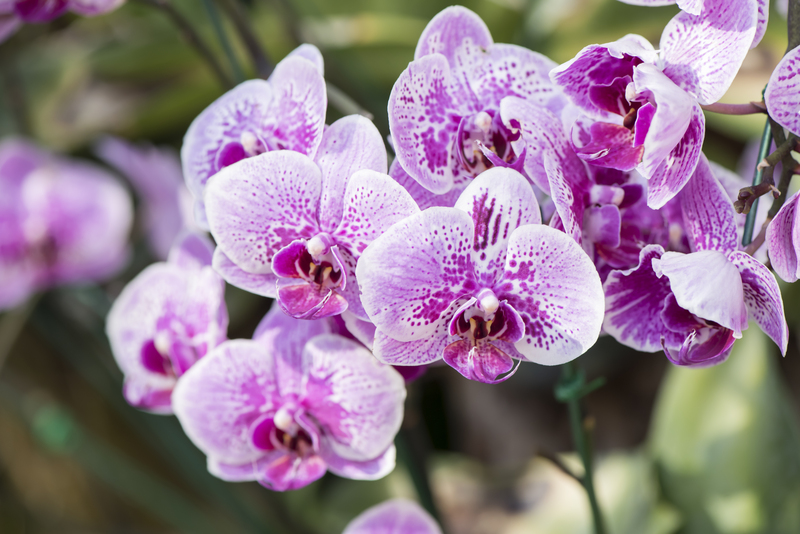How to Use Landscaping for Maximum Privacy in Your Outdoor Retreat
Creating a private outdoor sanctuary is a dream for many homeowners. With the right landscaping strategies, you can transform your backyard, patio, or garden into a secluded oasis where you can relax, entertain, and unwind away from prying eyes. In this comprehensive guide, we'll explore innovative ways to use landscaping for maximum privacy in your outdoor retreat, discussing the best plants, structures, and design techniques to enhance seclusion while maintaining beauty and functionality.

Why Outdoor Privacy Matters
From enjoying family gatherings to having a quiet space for meditation, privacy is a fundamental element of outdoor living spaces. Landscaping for privacy not only helps block views from neighbors or busy streets, but it also creates a sense of peace and safety. Furthermore, a well-landscaped retreat can improve your home's value and aesthetic appeal, making it an important consideration in your overall outdoor design strategy.
The Benefits of a Private Outdoor Retreat
- Increased comfort and relaxation
- Enhanced property value
- Protection from wind, noise, and dust
- Improved safety and security
- Greater freedom for personal expression and activities
Assessing Your Privacy Needs
Every yard is different, and so are privacy requirements. Start by identifying which areas of your outdoor retreat need the most screening. This could include patios, pools, hot tubs, dining spaces, or play areas. Observing where your neighbors' windows, decks, or walking trails overlook your property can help prioritize which spots need more seclusion.
Questions to Guide Your Privacy Landscaping Plan
- Where is the most exposure? Consider sightlines from neighboring homes, streets, or public spaces.
- What level of privacy do you want? Decide if you need complete seclusion or just some visual barriers.
- What style complements your existing landscape? Whether you prefer a natural look or structured design, choose plants and materials that harmonize with your home's aesthetic.
- Will privacy features block sunlight or airflow you want to keep?
Best Landscaping Elements for Outdoor Privacy
There are many ways to achieve maximum privacy through landscaping. The ideal approach often combines both living (plants) and non-living (structures) elements, tailored to your environment and personal preferences. Let's explore the most effective options:
1. Privacy Hedges and Living Fences
Thick, dense shrubbery is one of the most traditional and attractive solutions for backyard privacy. A living fence, created from hedges or closely planted evergreens, offers year-round coverage while contributing to the organic vibrancy of your retreat.
- Evergreens: Arborvitae, holly, yew, and cypress provide lush, all-season screens. These are ideal for fast-growing, tall privacy hedges.
- Deciduous hedges: Boxwood, privet, or hornbeam offer dense foliage but may lose leaves in winter, reducing blockage.
- Flowering shrubs: Forsythia, lilac, hydrangea, viburnum add color, fragrance, and beauty along with privacy.
- Bamboo: Clumping varieties are non-invasive and grow rapidly to make natural bamboo privacy screens. Use barriers to prevent spreading.
2. Trees for Layered Privacy
Strategically planting trees introduces vertical privacy layers. Combining tall evergreens with medium-sized flowering or ornamental trees creates a lush, multi-tiered barrier that blocks both views and noise.
- Evergreen trees: Thuja, pine, spruce, and cedar remain green all year for continual coverage.
- Ornamental trees: Redbud, dogwood, or cherry can offer dense screens while providing seasonal interest.
- Fast-growing options: Hybrid poplar, Leyland cypress, and eastern white pine are great choices for quick privacy.
- Place trees in staggered rows to avoid gaps and create a naturalistic, effective privacy screen.
3. Privacy Screens and Fencing
When immediate privacy is needed, hardscape solutions like fences and privacy screens are invaluable. These can be paired with plantings for a softer, more inviting appearance.
- Wood fencing: Classic and versatile, can be designed for total seclusion or with latticework for partial screening.
- Vinyl fencing: Low-maintenance, available in a range of styles and heights for modern privacy needs.
- Lattice panels and trellises: Excellent for supporting climbing plants, adding texture and greenery to standard fencing.
- Outdoor curtains: Weather-resistant drapes attached to a pergola, gazebo, or other structures for flexible, movable privacy.
4. Layered Planting Design
Combining several plant species in different heights and textures produces a natural, dense privacy screen. Layered landscaping is both beautiful and effective for privacy.
- Start with anchor trees at the back for height.
- Plant medium-sized shrubs and bushes in front of the trees.
- Add perennials, grasses, and low-growing groundcovers at the front to fill gaps and deter foot traffic.
- Mix evergreen and deciduous plants for year-round coverage and seasonal visual interest.
5. Vertical Gardens and Living Walls
Small-space backyards or patios can benefit greatly from vertical landscaping. Living walls use climbing plants or modular planters mounted on fences or walls to create privacy where horizontal space is limited.
- Climbing plants: Ivy, clematis, climbing roses, and wisteria rapidly soften hard surfaces and offer dense coverage.
- Modular living wall systems: These panels support a variety of vines and annuals, adding both privacy and artful appeal.
6. Natural Berms and Earthworks
Subtle mounds of soil, known as berms, or landscaped earthworks can elevate planting areas to create height and block sightlines. Natural berms can be planted with trees and shrubs for even more effective screening.
- Use berms along property lines or between outdoor living zones.
- Combine with rocks, boulders, or retaining walls for a natural look.
Design Tips for Maximum Outdoor Privacy
Transforming your yard into a true private retreat is about more than just erecting barriers. The following design strategies will help you maximize seclusion while promoting harmony and natural beauty:
Blend Privacy Features with Your Landscape
- Integrate living screens with hardscape elements to avoid the look of fortress-like walls. Use climbing vines, ornamental grasses, or flowering plants along fences and walls for a softer appearance.
- Curved pathways and planting beds break up sightlines more effectively than straight lines, making it harder to see across your retreat.
- Use focal points such as water features, sculptures, or fire pits to direct views away from less private areas.
- Incorporate multi-level decks or patios to further segment your outdoor living zones.
Change Elevations for Enhanced Seclusion
Adding slight changes in elevation to your yard--in the form of terraces, raised patios, or sunken seating areas--can instantly increase privacy. These features allow you to enjoy different perspectives while reducing visibility from neighboring properties.
Sound Barriers for Acoustic Privacy
Privacy is about more than sightlines; it's about tranquility. Using water features like fountains, bubbling urns, or waterfalls, as well as dense plantings, can help mask unwanted noise from traffic or neighbors, creating a serene atmosphere.
Lighting and Privacy
Thoughtful lighting design is essential if you plan to enjoy your private outdoor retreat at night. Use low-voltage path lights, uplighting on trees, and shielded fixtures that provide illumination but minimize visibility into your yard from outside.
The Best Plants for Outdoor Privacy Landscaping
Choosing the right plants is key to effective privacy landscaping. Here are some top selections, suitable for various styles and climates:
- For Hedges:
- Arborvitae (Thuja): Dense, upright, and fast-growing.
- Privet: Classic for traditional hedges.
- Boxwood: Neat, compact, excellent for formal edges.
- For Natural Screens:
- Bamboo: Choose clumping types to avoid invasiveness.
- Holly: Evergreen, prickly leaves deter trespassers.
- Pyracantha: Dense and thorny, excellent for boundaries.
- Climbers and Vines:
- English Ivy: Classic look, excellent coverage.
- Clematis: Showy flowers, quick cover.
- Jasmine: Fragrant and lush.
- For Color and Wildlife:
- Butterfly bush: Attracts pollinators.
- Lilac, hydrangea, and forsythia: Beautiful, seasonal privacy options.
Low-Maintenance Privacy Landscaping Ideas
If you want to enjoy seclusion without a lot of upkeep, choose low-maintenance privacy plants and features.
- Select native plants that adapt well to your climate and require little water or fertilizer.
- Opt for slow-growing shrubs and evergreens that don't need frequent pruning.
- Use mulch and groundcovers to suppress weeds around your privacy plantings.
- Install drip irrigation for easy, water-efficient care.
- Combine attractive hardscape elements like fences or stone walls with well-placed evergreen shrubs.

Example Plans for Different Outdoor Retreats
Backyard Retreat
For complete privacy in a suburban backyard, combine a 6-foot fence with a row of fast-growing arborvitae or holly. Add medium shrubs and ornamental grasses in front for layering. Use a pergola draped in jasmine or clematis over the patio for vertical screening and scent.
Urban Patio or Balcony
Use tall, movable planters with bamboo or tall grasses along railings. Incorporate metal or wood privacy screens for instant enclosure. Add a vertical garden or modular living wall with trailing vines for green coverage.
Pool or Hot Tub Area
Combine stone privacy walls with dense green screens like cypress or boxwood. Use outdoor curtains attached to a cabana or pergola for added flexibility. Ornamental grasses and broadleaf evergreens round out the secluded ambiance.
Final Thoughts: Creating Your Perfect Private Outdoor Space
Using landscaping to maximize privacy is both an art and a science. By layering living fences, trees, privacy screens, and creative design features, you can design a sanctuary that is beautiful, functional, and thoroughly secluded. Take the time to plan according to your site's exposures, needs, and personal tastes--whether you crave a lush green hideaway, a tranquil patio retreat, or a sophisticated modern oasis.
For best results, work with a professional landscape designer familiar with your region. They can recommend the best privacy landscaping strategies and plants for your local climate. Most importantly, enjoy the process of creating a private outdoor haven that enhances your lifestyle and brings you maximum comfort, relaxation, and joy for years to come.



